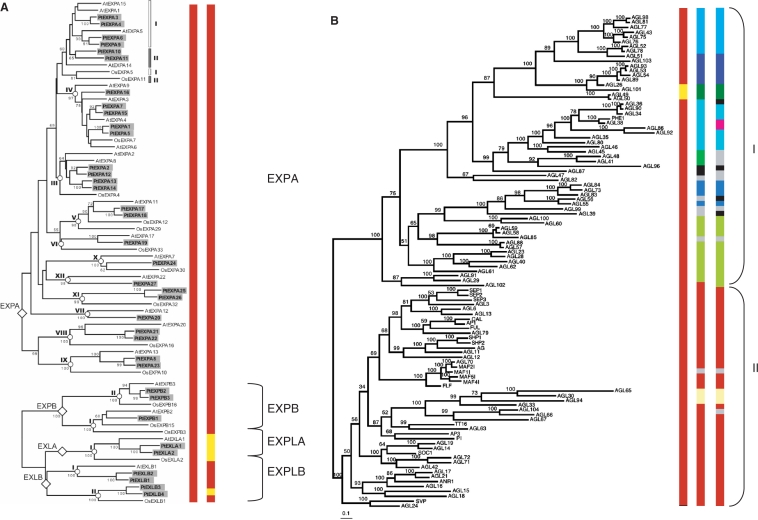Figure 3.
Tribes with expansin (A) and MADS box genes (B) formed at low, medium and high stringencies in the three-species clustering are mapped onto recently published gene phylogenies (32,33). (A) In the Expansin phylogeny, all genes are found in a single tribe at low stringency. At medium stringency, the genes are broken up into two tribes separating expansin-like A subfamily genes from all others expansin sub-families (tribe containing additional expansin-like genes not included in the original phylogeny). At high stringency, expansins are resolved as two tribes corresponding to the sub-families alpha + beta and expansin-like. (B) The MADS box genes (including type I and II) included in the phylogeny are in two tribes with all genes in one tribe except AGL49 and AGL50. At medium and high stringencies, well-defined clades appear. The type I genes break up into many more tribes than type II genes, which is expected since type I genes are more divergent among themselves. Within the type II genes, AGL65, AGL30, AGL94 are broken out from the main tribe, which is to be expected since this group of genes is highly divergent type II genes.

